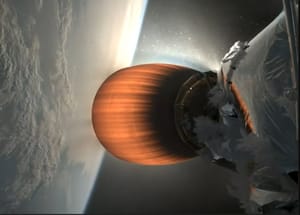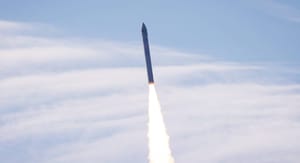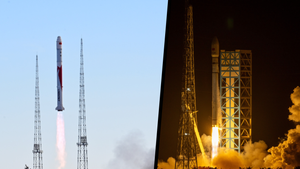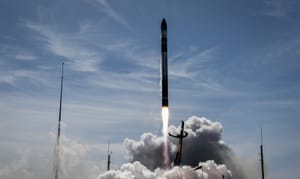
Jul 12, 2024
Falcon 9 experiences in-flight anomaly for the first time in nine years
SpaceX launched what appeared to be a regular Starlink mission atop of Falcon 9 from Space Launch Complex 4E, in California, on July 12th at 02:35 Universal Coordinated Time. During the second-stage's ascent to orbit, a build-up of ice was noticed on SpaceX's launch stream.
The MVac engine powering Falcon 9's second-stage did complete its first of two burns, however the anomaly for this mission occurred shortly into the second burn.
Elon Musk, SpaceX's CEO, stated on X (formerly Twitter) that the anomaly occurred during the second burn of the MVac engine, which eventually led to its disintegration. SpaceX currently does not know the root cause of the failure but they do know that the second-stage was leaking liquid oxygen, which also led to the visible ice build-up.
The company's current understanding of what occurred is as follows:
"Falcon 9’s second stage performed its first burn nominally, however a liquid oxygen leak developed on the second stage. After a planned relight of the upper stage engine to raise perigee – or the lowest point of orbit – the Merlin Vacuum engine experienced an anomaly and was unable to complete its second burn. Although the stage survived and still deployed the satellites, it did not successfully circularize its orbit, but it did passivate itself as normally performed at the end of each mission."
The U.S. Federal Aviation Administration is aware of the anomaly and has grounded Falcon 9. SpaceX and the Federal Aviation Administration will be conducting a mishap investigation before conducting a return-to-flight mission.
Twenty Starlink satellites were on board Falcon 9 when it failed, and they were later released from the second stage in an attempt to move them into a usable orbit. SpaceX was able to make contact with ten of the satellites, but their low thrust was inadequate to counteract the drag, and they re-entered the Earth's atmosphere after a few orbits.
NASA would likely prefer Falcon 9 to conduct a return-to-flight mission ahead of its Crew-9 mission, carrying four astronauts, currently scheduled for late August. The Polaris Dawn mission, which was scheduled for the end of July, may also be delayed as it is another crewed mission, that has plans to conduct the first spacewalk from a Crew Dragon spacecraft.
SpaceX's other customers may prefer that the mishap investigation and return-to-flight mission be completed before flying on Falcon 9 again. A batch of Starlink satellites is the most likely payload for a return-to-flight mission, given their mass and the need for an MVac relight to circularise the orbit.
This was also SpaceX's first in-flight failure since June 28th 2015, when the second-stage liquid oxygen tank ruptured during the CRS-7 mission over nine years ago. Almost eight years ago the last Falcon 9 was lost when it exploded on the launchpad on September 1st 2016, ahead of the AMOS-6 mission.
Sadly the failure also brings an end to Falcon 9 Block 5's perfect flight record, with it successfully completing two-hundred and ninety-seven missions, and ending a successful mission streak for Falcon 9 at three-hundred and thirty-four. Luckily the booster landing streak is still ongoing at two-hundred and forty-three.
Falcon 9’s first stage lands on the Of Course I Still Love You droneship, completing our 70th mission of the year! pic.twitter.com/PKxveAEju5
— SpaceX (@SpaceX) July 12, 2024
SpaceX confirming the landing of booster B1063 during the Starlink Group 9-3 mission via X.
The booster that was supporting this specific mission was B1063 making its nineteenth flight overall.



